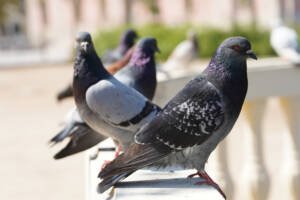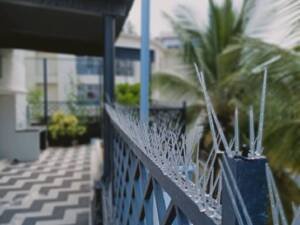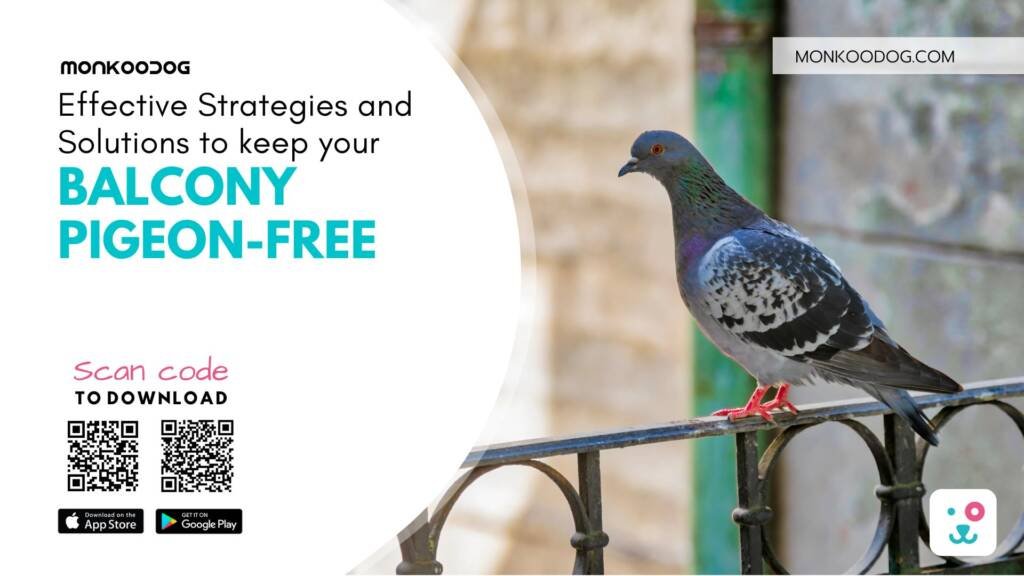Pigeons, often associated with cityscapes and public squares, can become unwelcome when they nest on balconies. These birds are not only a nuisance, but their droppings can damage property and pose health risks. Therefore, homeowners must find humane yet effective deterrents that prevent pigeons from roosting on their property. Several non-lethal methods can discourage pigeons from making a home out of a balcony without causing them harm, to make your balcony Pigeon-Free and ensuring a peaceful coexistence between humans and birds.
Understanding why pigeons flock to certain areas is the first step in resolving the pigeon problem. Food availability, shelter, and nesting opportunities can attract pigeons to balconies. By identifying what draws them, homeowners can implement targeted measures to make these areas less appealing. Employing effective deterrents, like reflective objects, bird spikes, and certain auditory devices, can create a less attractive environment to pigeons while complying with local wildlife protection regulations. OvoControl’s research on innovative and effective deterrents offers insight into humane control options for those dealing with pigeon nuisances.
Key Takeaways
- Humane deterrents can effectively prevent pigeons from nesting on balconies.
- Understanding the attractants can help implement targeted deterrents.
- Non-lethal measures are available that comply with animal welfare standards.
Here are a bunch of non-lethal methods to keep your balcony pigeon-safe:

But first, Assess and Address the Pigeon Problem
To effectively deter pigeons from your balcony, it’s essential to understand their behavior, identify what attracts them, and implement measures to make the area less appealing.
Understanding Pigeon Behavior
Pigeons seek out spaces that provide them with shelter, food, and water sources. These birds are experts at exploiting urban environments, often using balconies as substitute cliffs for nesting.
Identifying Attraction Points
Balconies can mimic the natural ledges pigeons prefer for nesting. Factors attracting pigeons include easy access to food, which may come from garbage or crumbs left by people. Water accumulation can also create inadvertent water sources, whether from watering plants or rainfall. Nesting is further encouraged by the availability of materials, like twigs or debris, to build nests.
Implementing Preventative Measures
Preventative measures should focus on removing the elements that pigeons seek.
- Food: Ensure no food sources or edible garbage remains to tempt pigeons.
- Water: Eliminate standing water to cut off their water sources.
- Shelter: Block potential shelter spots to discourage nesting.
Addressing these points decreases the likelihood of pigeons settling on your balcony. Furthermore, products like bird spikes can physically deter pigeons without causing harm.
Removing attractions and securing the space are key strategies for a pigeon-free balcony. Regular clean-up of droppings is also vital to prevent disease and maintain hygiene. With these measures in place, pigeons will likely look elsewhere for necessities.
Employing Effective Deterrents to make balcony Pigeon-Free

Deploying appropriate deterrents can significantly reduce the presence of pigeons on balconies without causing harm to the birds. These measures should be employed with the understanding that each location may require a tailored approach for maximum effectiveness.
Physical Barriers
Bird Spikes: Installing anti-roosting spikes is one of the most effective ways to prevent pigeons from landing and nesting on ledges and surfaces. Their pointed structure discourages pigeons due to discomfort.
Bird Netting: Using bird netting creates a physical barrier that blocks pigeons from reaching potential nesting areas. It’s important to ensure the netting is secured properly to prevent any gaps pigeons could exploit.
Auditory and Visual Scare Tactics
Reflective Objects: Hanging reflective tape or old CDs can create moving reflections that startle and deter pigeons from settling on your balcony. These objects can be easily installed and are cost-effective for warding off birds.
Fake Predators: Positioning decoys, like rubber snakes or figures resembling fake predators, can make pigeons wary of potential danger. Frequent repositioning of these decoys can maintain their effectiveness as a deterrent.
Professional and Natural Remedies
Repellent Gel: Applying non-toxic repellent gel on common perching points creates an uncomfortable, sticky surface, which can deter pigeons from continuing to land there.
Natural Repellents and Devices: Natural repellents or ultrasonic devices can safely and humanely keep pigeons away. OvoControl’s research on pigeon control outlines various solutions, including devices that emit unpleasant frequencies to pigeons but are imperceptible to humans.
Conclusion
Effective pigeon deterrence requires a balance of strategies that respect the environment and local wildlife laws. Reflective objects, bird netting, and protective spikes provide physical barriers, while strategies like strategic feeding can alter their behavior without harm. It is crucial to conduct these actions responsibly to ensure the safety of both pigeons and humans, always abiding by local regulations. Implementing these measures collectively often yields the best outcome in managing pigeon populations humanely and efficiently.

